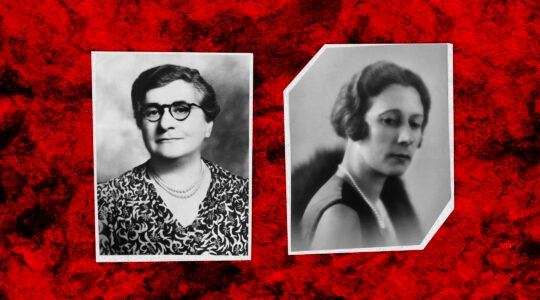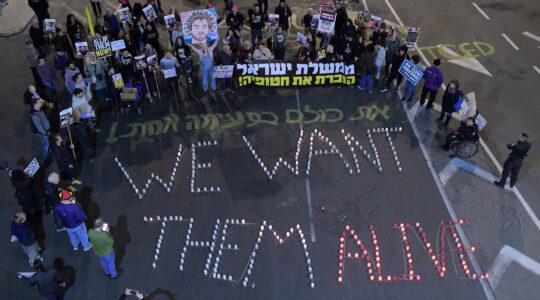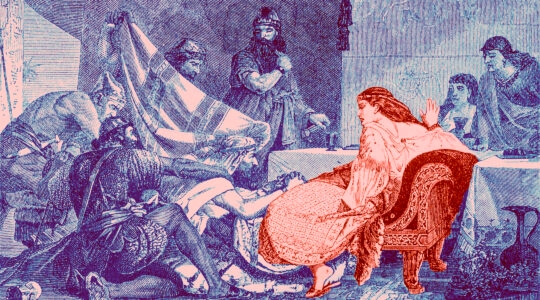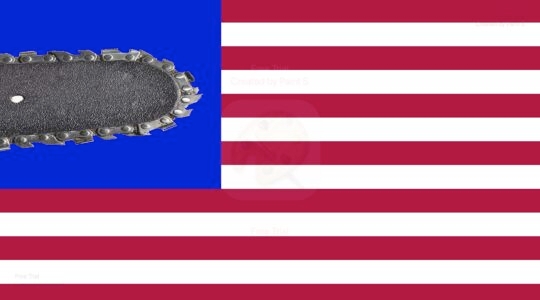As we are about to mark the 25th anniversary on Dec. 6 of the historic march on Washington by an estimated 250,000 people on behalf of Soviet Jewry, I believe the time has come to establish a day of commemoration to be included on the U.S. Jewish communal agenda, memorializing one of the great redemptions of Jewish history, which we were privileged to witness in our time.
The march, which took place on the eve of a summit between Soviet Leader Leonid Brezhnev and President Ronald Reagan, has been credited widely with giving a significant push for opening the gates of emigration from the Soviet Union for Jews, most of whom settled in Israel or America.
In an illuminating survey of the Soviet Jewry movement in the journal Azure (April 2004), Yossi Klein Halevi summed up the transformation that took place as a result of the movement as follows: “American Jews came to see themselves as a major force for Jewish security and freedom, protecting endangered Jews through political means, just as Israel did through military means. In the struggle for the freedom of Soviet Jews, American Jewry liberated itself as well.”
Here are a number of possible dates to commemorate this achievement:
March 1:
“Stalin’s Purim”: In the last period of his life, Stalin’s obsessive Jew-hatred manifested itself in events such as the trials of Jewish doctors accused of attempting to poison him and other leaders. Plans were far advanced for a mass deportation of Jews from urban areas, when he suffered a fatal stroke on March 1 1953, which happened to be Purim. He actually died on March 5 but the Jews heard it was on Purim, and Khrushchev’s regime suddenly inspired fresh hope for better times. Unfortunately, this was only the beginning of the protracted dissolution of the Soviet regime.
May 1:
The first public confrontation of the Kremlin in the United States was called for the Soviet holiday, May Day, in 1964. With this move, the newly formed Student Struggle for Soviet Jewry (SSSJ) initiated the grassroots movement for Soviet Jewry by bringing some 1,000 students in front of the Soviet UN Mission.
SSSJ, which I founded and directed, was the only full-time U.S. Soviet Jewry organization from 1964 to 1971. It called for the establishment of full-time organizations to effect national mobilization of American Jewry in the struggle. Finally, in 1971, two such organizations were officially established, the National Conference on Soviet Jewry under the direction of Jerry Goodman, and the Greater New York Conference on Soviet Jewry under the young Malcolm Hoenlein. Hoenlein’s initiation of his powerful annual Solidarity Sundays resulted in the massive mobilization of New York Jewry on the lines of SSSJ’s continuous New York activist grassroots activities of the 1960s.
December 6:
Comprehensive national mobilization did not occur, however, until Natan Sharansky, soon after his release from a Soviet prison, traveled around the U.S. and generated a huge Washington demonstration, the largest in American Jewish history, on December 6, 1987, brilliantly organized by David Harris of the American Jewish Committee.
December 10, International Human Rights Day:
In 1948 Eleanor Roosevelt, then U.S. Ambassador to the U.N., succeeded in getting December 10 established as International Human Rights Day.
When Sen. Henry Jackson first introduced Congressional legislation tying commercial benefits for the USSR to freedom of Jewish emigration in 1973, he quoted the Universal Declaration of Human Rights, which holds that “everyone has the right to leave any country, including the right to return to his country”. The Jackson-Vanik Amendment was to to provide unique leverage with the Kremlin over the many years of struggle.
The process was carried further by the Helsinki Final Act of 1975. The Kremlin, in its strong desire to obtain permanent international recognition of its large gains in East Europe, agreed to a deal which gave them this in return for a vague written declaration of universal human rights which, however, included a reference to “the reunion of families.”
Thereafter in a series of international human rights conventions, called the Helsinki Process, the United States and others managed to hugely expand international consciousness of the Kremlin’s limitations of Soviet Jewish emigration, and eventually, after many bitter struggles, U.S. Secretary of State George Shultz, with the active encouragement of President Ronald Reagan, extracted a series of Soviet concessions which eventually resulted in the emigration of some two million Soviet Jews, and a strong revival of Russian-Jewish communal institutions.
I have to admit that the notion of December 10 as Soviet Jewry Liberation Day is attractive to me as I was born on that day in 1926, but I feel that my initiation of the grassroots movement on May Day 1964, which made the top of page 2 of the New York Times with a photograph, has a superior claim.
Shortly after World War II as a 20-year old, I went to work with young victims of Nazi and Soviet totalitarianism, lodged in the German D.P. camps. After 65 years of service to the Jewish people, the establishment of a Soviet Jewry Liberation Day would give me some real naches, or satisfaction, at the end of my life.
Dr. Jacob Birnbaum is founder and director of the Center for Russian Jewry with Student Struggle for Soviet Jewry.
The New York Jewish Week brings you the stories behind the headlines, keeping you connected to Jewish life in New York. Help sustain the reporting you trust by donating today.




